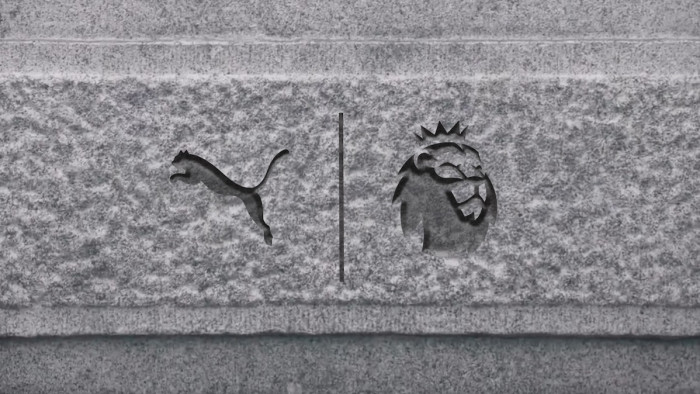If you're anything like us, when someone mentions wrestling you're instantly thinking about Mr Perfect v Brett 'The Hitman' Hart for the WWF Intercontinental Championship, Summerslam 1991. In reality though, it's an actual sport done by actual sportsman who aren't acting. And sadly, in real wrestling, there's no such thing as piledrivers and Bushwackers. Still, here's your cheat sheet...
Athletes: 344
Golds up for grabs: 18
Olympic Presence: Men 1896 and 1904–present; women since 2004.
Olympic Format: two styles: Greco-Roman, in which holds beneath the waist are forbidden, and Freestyle, in which they are allowed. Women only compete in freestyle at the Olympics.
Current Contenders: The top-ranked nations are Russia, France, Armenia and Cuba in the Greco-Roman events; Azerbaijan, Iran, Russia and Kazakhstan in the men’s freestyle; and China, Canada, Japan and Ukraine in the women’s freestyle.
Past Champions: USA : 46 | USSR : 28 | Japan: 19 | Turkey: 16
Watch it: 5-12 August, ExCel Arena, London E16 1XL. Catch the BBC’s coverage of the Olympic Games across 24 dedicated channels on freesat
..........................................................................................................................................................
The basics
In Greco-Roman wrestling it is forbidden to grasp the opponent below the beltline or to use the legs ‘actively’ to perform any action. In freestyle the first rule doesn’t apply, and legs can be used aggressively, though it is not permitted to lock them scissor-style around an opponent’s head, neck or body. That aside, the rules are broadly the same for each form.
Freestyle is the more dynamic form of wrestling, with the competitors spending a lot of time circling each other looking for an opportunity to dive in. Greco-Roman wrestling is more obviously a matter of brute strength, but in both styles the maintenance of balance is essential: at times the action may appear to have frozen, but the wrestlers are always probing for small losses of equilibrium. Wrestlers are not allowed to talk during a bout. Neither may they pull each other’s hair, pinch, bite, head-butt, attack genitals, hold an opponent’s singlet, grab the sole of his foot or generally do anything ‘with the intention of torturing the opponent’, as the rule book puts it. Double Nelsons are strictly forbidden in women’s wrestling.
The Mat
The action takes place on a circular mat 9m in diameter. The outer 1m of this area is known as the red zone. Its function is to alert the wrestlers and officials that the action has moved to the margin of the legitimate wrestling area. The region beyond the red zone is a 1.5m strip called the protection area. If a wrestler places a foot in the protection area, the bout is stopped, a point is awarded to his opponent and wrestling resumes in the centre of the mat.
In the middle of the central wrestling area is the central circle, which is 1m in diameter. Aside from forming the area of the mat where wrestling commences or recommences after a break, the central circle determines how the wrestlers are to disport themselves during curious set pieces called ordered holds, of which more later.
Dress Code
Each male competitor must be closely shaven or have a beard of several months’ growth. Moustaches, which are very popular in some of the sport’s dominant nations, are not mentioned in the official rules. Competitors wear either blue or red singlets made of nylon or Lycra. The use of light, metal-free knee pads is permitted. Woman are not allowed to wear wired bras. Wrestlers are not permitted to apply greasy or sticky substances to their bodies. They must have cloth handkerchiefs with them at all times, to wipe away escaped bodily fluids. Fingernails must be cut very short.
The Officials
Each bout is officiated by a referee, a mat chairman and a judge. The referee controls the action on the mat, using voice and whistle, and indicates the scoring of points with hand signals. The judge keeps tally of the score and acts as a second pair of eyes, alerting the ref if he feels he has missed something important. The mat chairman acts as arbiter in the event of a disagreement between referee and judge, and keeps time.
Structure of the Tournament
There are seven weight classes, ranging from 50kg upwards. Rather marvellously, there is now a maximum weight limit for Olympic wrestlers of 120kg. The competition for each weight division takes place on a single day.
The first part of the contest is a series of knock-out rounds, delivering two finalists. The second is contested by everyone who was beaten by either of the finalists earlier in the competition. They are divided into two groups according to which finalist they lost to. Each group then has a mini-tournament, with the winners claiming the two bronze medals awarded.
How a Bout is Won
The rules and scoring systems of Olympic wrestling change with infuriating frequency, but a grasp of the following principles should allow you to appreciate what is going on. If one wrestler manages to pin the other’s shoulders to the ground long enough for the referee to determine that they are indeed a fall is scored and they win the bout immediately. A wrestler also wins a bout if their opponent is disqualified, either through incurring three cautions or, in cases of egregious brutality, through instant dismissal. In all other cases, a bout is the best of three rounds. These can be won in three ways. The first is technical superiority, in which one wrestler goes so far ahead in a round that they are declared its winner before two minutes have elapsed. The second is simply for a wrestler to score more points during its duration than their opponent. The final way of winning a round, if the scores are level, is to be awarded it. In Greco-Roman rounds, the judges use complex criteria based on cautions, high scoring manoeuvres and so forth. In freestyle, if neither wrestler scores a technical point during the thirty-second round extension, the one who pulled the short straw in the draw for the ordered hold is automatically awarded the round.
How Points are Scored
The usual way to win a round is the accumulation of points. These can be scored in a variety of ways, which will make more sense once you have grasped the definition of the danger position. A wrestler is said to be in this undesirable state when the line of their back or shoulders forms an angle of less than ninety degrees to the mat while they are using their upper body to avoid the indignity of a fall. That established, here are the chief moves and points:
Takedown A takedown involves gaining control over an opponent from a neutral position, i.e. when the taker-down is on his feet.
A five-point takedown involves a throw of grand amplitude which places the opponent in a direct and immediate danger position. which places the opponent in a direct and immediate danger not bring the opponent into a direct and immediate danger position, or for a short amplitude throw which does. One point is awarded for a short amplitude takedown which does not put the opponent in the danger position.
Reversal A wrestler who gains control over their opponent immediately after being in the reverse position (i.e. in the opponent’s control) is awarded one point.
Exposure A wrestler is said to be exposed when they are in the danger position but not via a throw. Two points are awarded whenever a wrestler exposes their opponent’s back to the mat, whether it is pinned or not. An extra point is earned if a wrestler keeps their opponent in an exposed position for five continuous seconds.
Penalties If a wrestler takes a time out due to injury, their opponent is awarded one point unless the injured combatant is bleeding. Infractions such as fleeing the mat, openly refusing contact, using an illegal hold or striking an opponent result in the award of one or two points to the other wrestler, depending on the severity of the offence. The guilty party also receives a caution; three strikes and you’re out.
Out-of-Bounds If a wrestler puts a foot in the protection area, the match is stopped and one point is awarded to their opponent. Wrestling then resumes in the centre of the mat.
Extracted from How to Watch the Olympics by David Goldblatt & Johnny Acton (Profile Books)(Images: Rex Features)
Latest
Related Reviews and Shortlists










